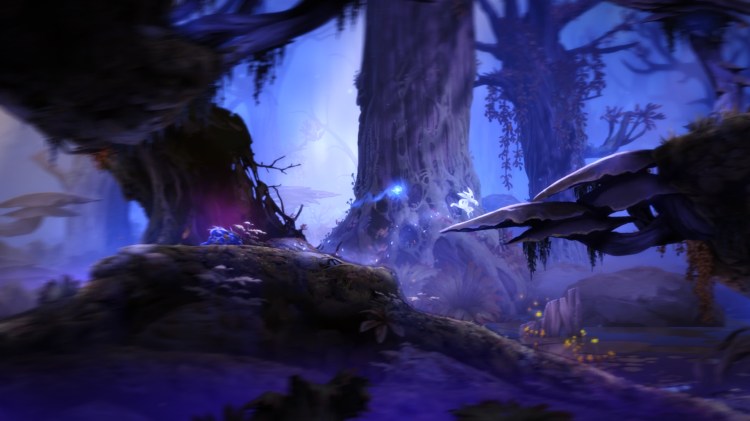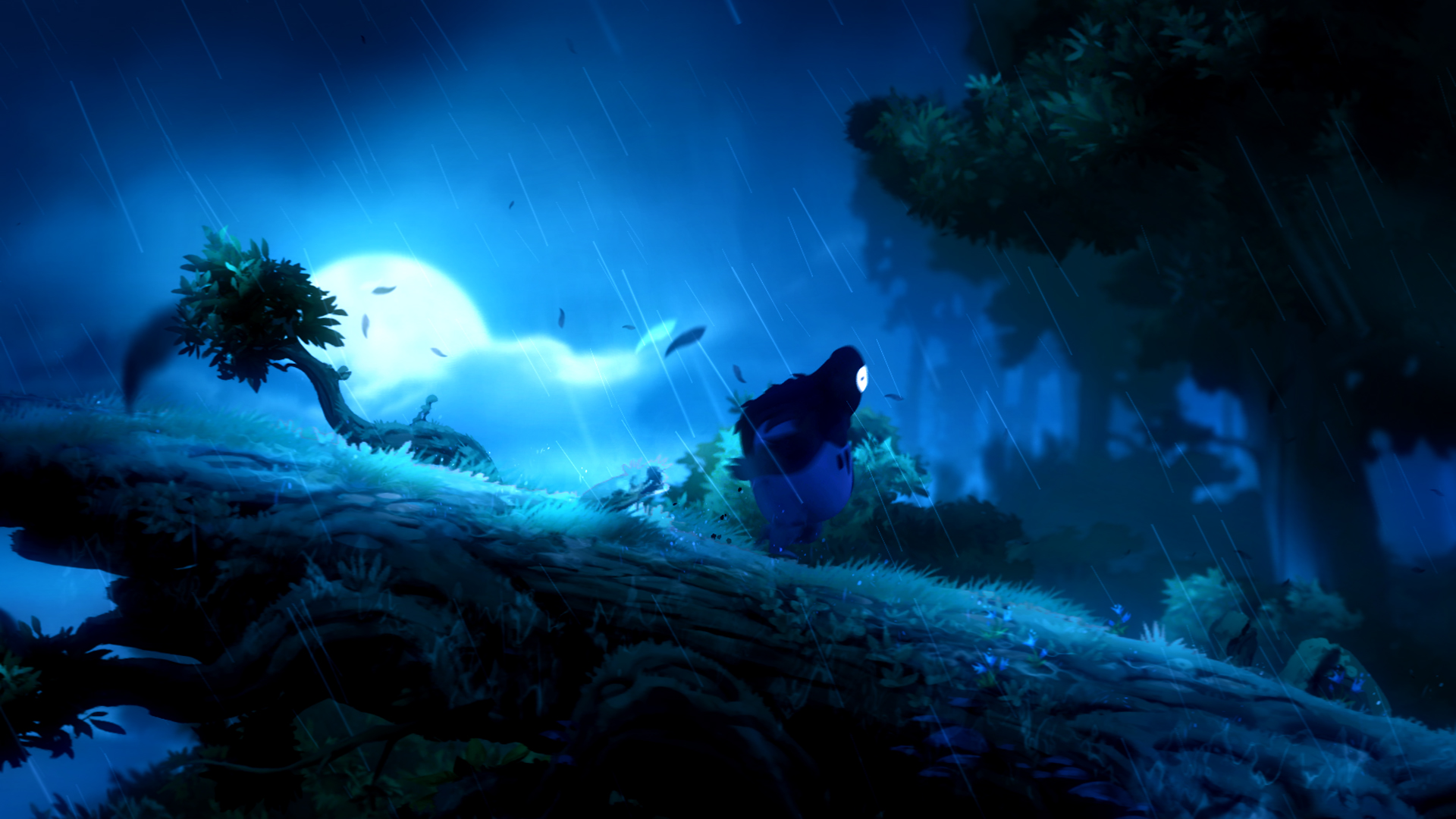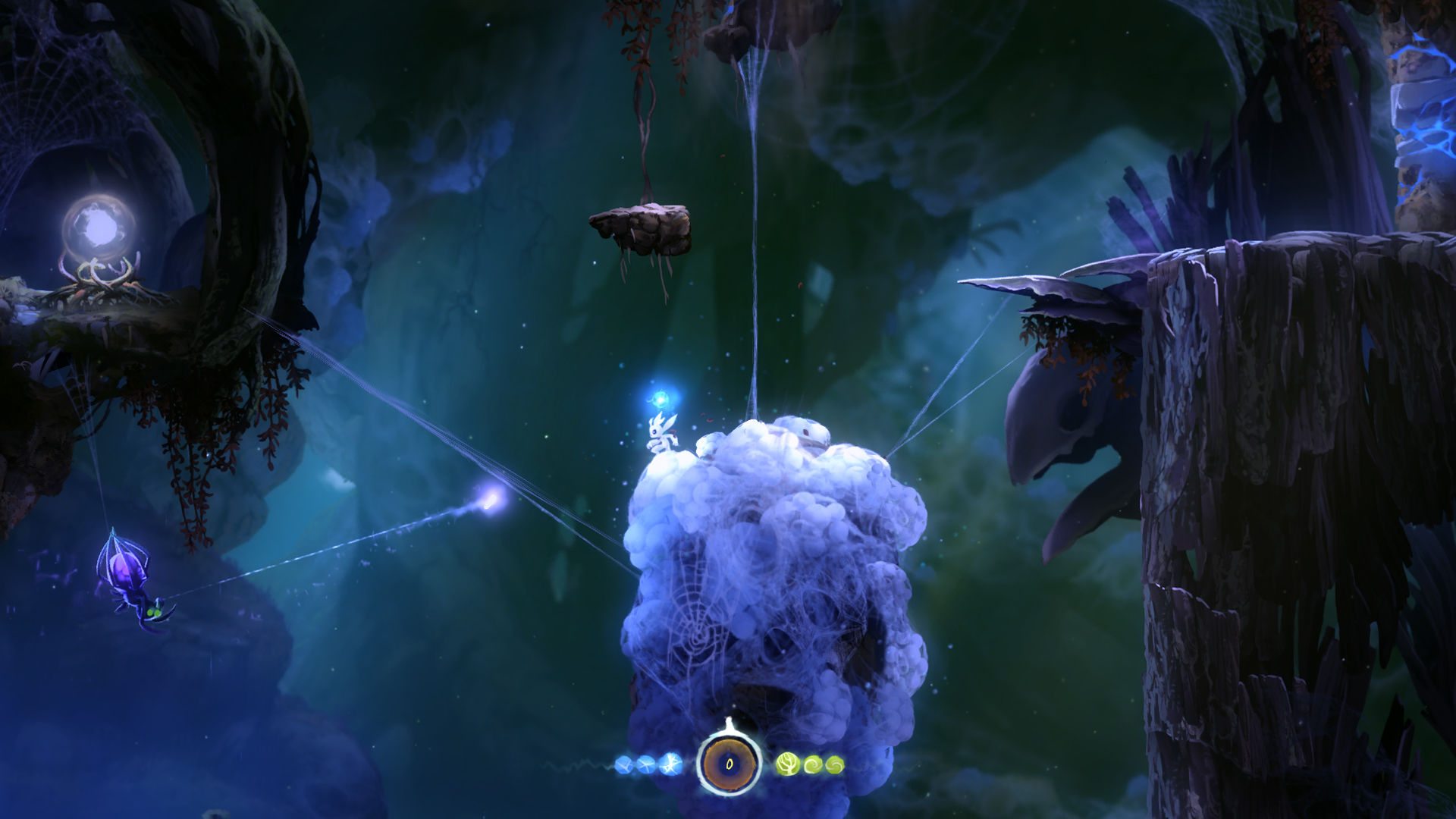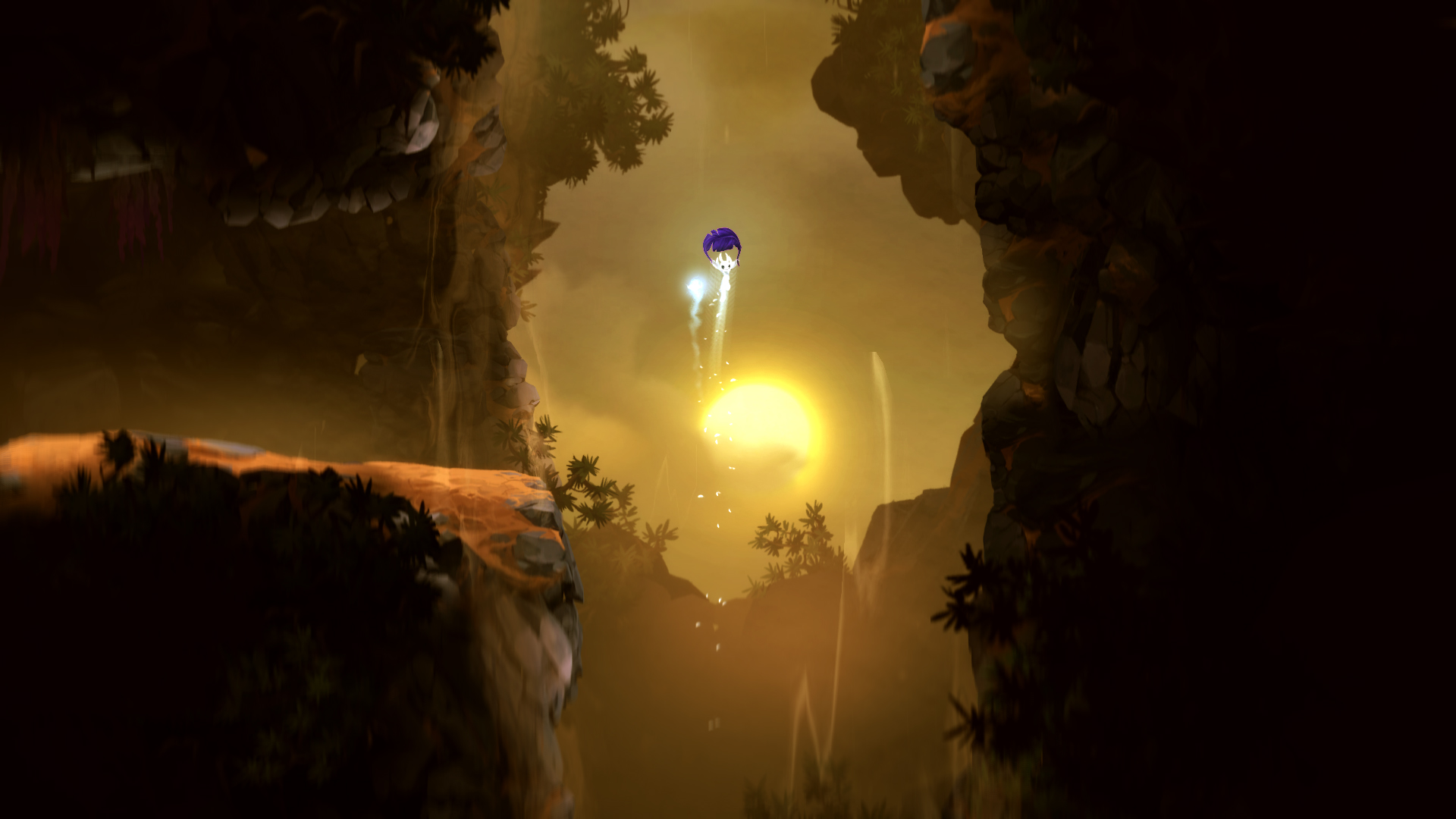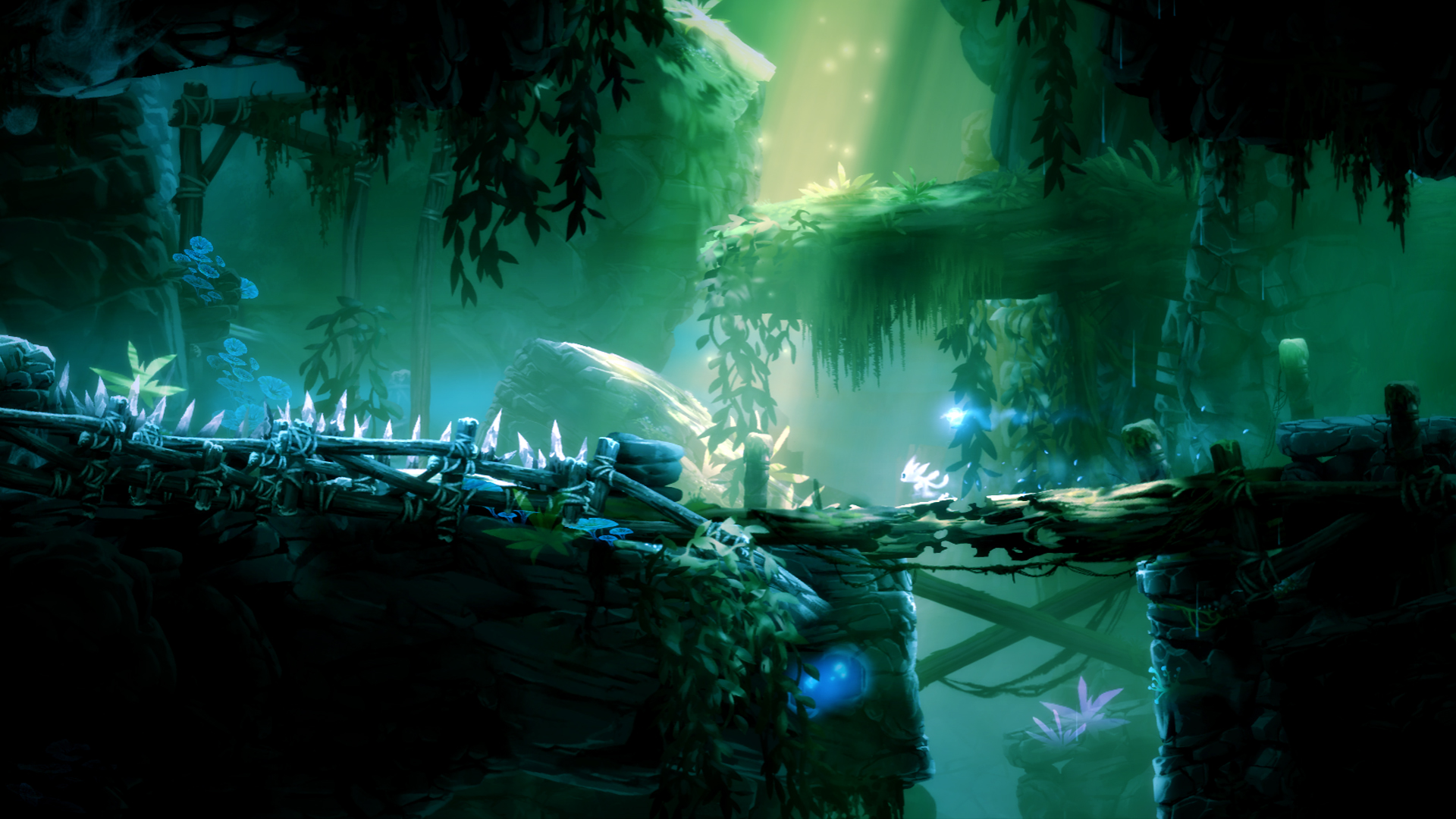Check out our Reviews Vault for past game reviews.
Think about some of the most beautiful games you’ve ever played. You probably remember the likes of The Legend of Zelda: The Wind Waker, Okami, and Journey. Add Ori and the Blind Forest to that list.
Ori is a new adventure-platformer (a genre often called “Metroidvania” by fans, named so because of the Metroid and Castlevania series that popularized it) that comes out on March 11 for Xbox One and PC. You can see just from the screenshots how good it looks, but it also plays like a masterpiece.
What you’ll like
A living cartoon
Similar to the 2D sidescroller Rayman Legends, Ori looks like a playable animated movie. But while Rayman took more inspiration from Saturday morning cartoons, Ori is more like something from a high-end animation studio like Disney or Studio Ghibli. Each frame is a work of art.
All of the elements — the characters, the backgrounds, the foregrounds, and the water and energy effects — work together to create one of the best-looking games ever made.
Tight design
Ori takes a lot of gameplay inspiration from Super Metroid. You explore a nonlinear 2D world while collecting power-ups that help you access new areas on the map. Of course, we’ve seen plenty of other games try to ape Super Metroid’s style, but Ori manages it as well as or better than anyone. Each area offers unique challenges that mix elements of action, platforming, and puzzle-solving. And, just like with Metroid, Ori rewards the astute and curious player with extra items.
Now, I’ve been comparing Ori to a lot of other things, but it has plenty of its own good ideas. My favorite is the Soul Link, which saves your game and shows you a skill tree with unlockable perks (which you can unlock with experience earned by beating enemies and finding hidden items). If you die, you just zip back to your last Soul Link.
However, you can’t just make as many Soul Links as you want. Doing so consumes energy, which isn’t always convenient to refill. A strong, chargeable attack also uses the same energy, so creating too many Soul Links will make a lot of fights harder.
This is a great idea, since it enables you save your progress just before especially tricky sections. It still makes it a gameplay system that you’re actually in control of. Ori doesn’t feel too easy because it just automatically saves your progress every two minutes. You’re in charge of that, and you’ll pay the price if you go too far without creating a Soul Link, die, and have to regain lost ground.
The fun power-ups
Just like any Metroidvania, Ori earns plenty of new abilities during his adventure. Some are basic, like a double-jump, and others are more interesting. My favorite is a move that helps Ori grab on to enemies and their projectiles and then launch himself from them. Not only is this great for reaching difficult heights, but you can also throw whatever you launch off of in the opposite direction, which you’ll need to do to solve all sorts of puzzles.
Really, the best thing about the power-ups are how powerful they make you feel when you begin to amass a bunch of them. Unlike in Metroid, the abilities you earn in the map exclusively help Ori’s maneuverability. You can still earn plenty of offensive tricks, but you access those in a traditional Skill Tree. Instead, your new moves allow you to climb, jump, and do pretty much anything else that could help you travel the world (minus flying).
It’s beautiful
This is about more than the looks. The music is haunting just as often as it is exciting, and I still have the main theme stuck in my head. OK, I actually just beat the game like 30 minutes before starting my review, so maybe that’s not all that impressive. But trust me — it’s a good tune.
The story, while minimal, is also touching, especially the opening moments that, while light on gameplay or action, do a wonderful job setting up the adventure’s tone and motivation.
What you won’t like
Some technical stuff
While Ori mostly ran beautifully, the frame rate would occasionally drop. It wasn’t awful, but it was noticeable. Thankfully, these moments weren’t too frequent.
I also had the game crash on me a couple of times, oddly at the very beginning and very end. The whole thing froze trying to load the opening cinematic, requiring me to reboot the game from the Xbox One’s dashboard. Then, after the credits rolled, the whole system crashed when I tried to press A during the start screen. Overall, not terrible places to have things die on me. Still, it was a bit concerning, and you might not be as lucky as I was.
Conclusion
I loved every second of Ori and the Blind Forest. It’s as fun as it is pretty, which is an incredible achievement when its one of the most gorgeous games I’ve ever seen. If you’ve ever enjoyed a 2D sidescroller, you’ll definitely appreciate what developer Moon Studios has done here.
If you’re a fan of Metroidvania-style games, you’ll find an experience that easily joins the ranks of Super Metroid and Symphony of the Night.
Score: 95/100
Ori and the Blind Forest is out for Xbox One and PC on March 11. The publisher provided us with a code of the Xbox One version for the purposes of this review.
VentureBeat's mission is to be a digital town square for technical decision-makers to gain knowledge about transformative enterprise technology and transact. Learn More
